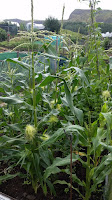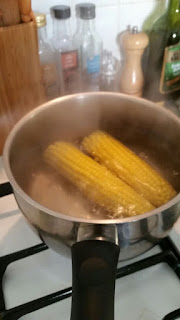1. Place one drained can of beans or two cups (if using fresh) in the blender.
2. Add one clove of garlic, two teaspoons of lemon juice, two teaspoons of cumin and two tablespoons of tahini.
3. Blend until smooth consistency is attained.
4. Taste. Add salt and pepper if necessary.
5. If hummus is too dry add sesame oil or liquid from can. Reblend to acheive desired consistency.
6. If you are using white beans a tablespoon of tomato puree can be added to give a nice pink colour.
7. Refrigerate until required. Will keep for a week at <5 degrees. (Not in my house though!)






















